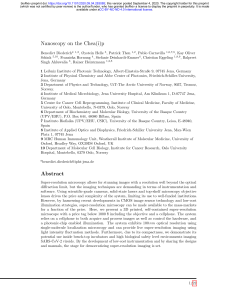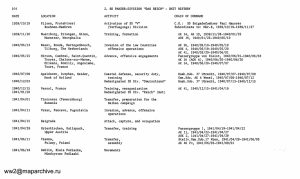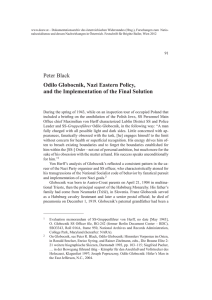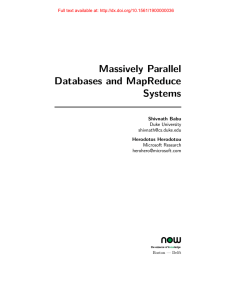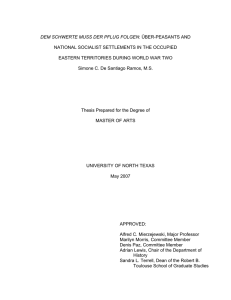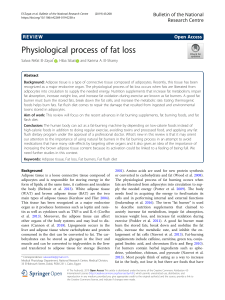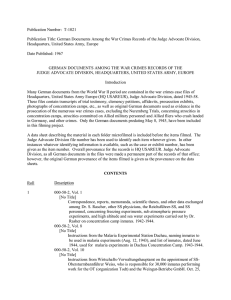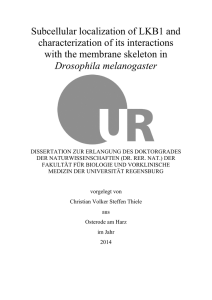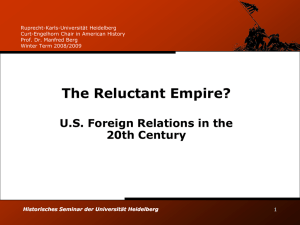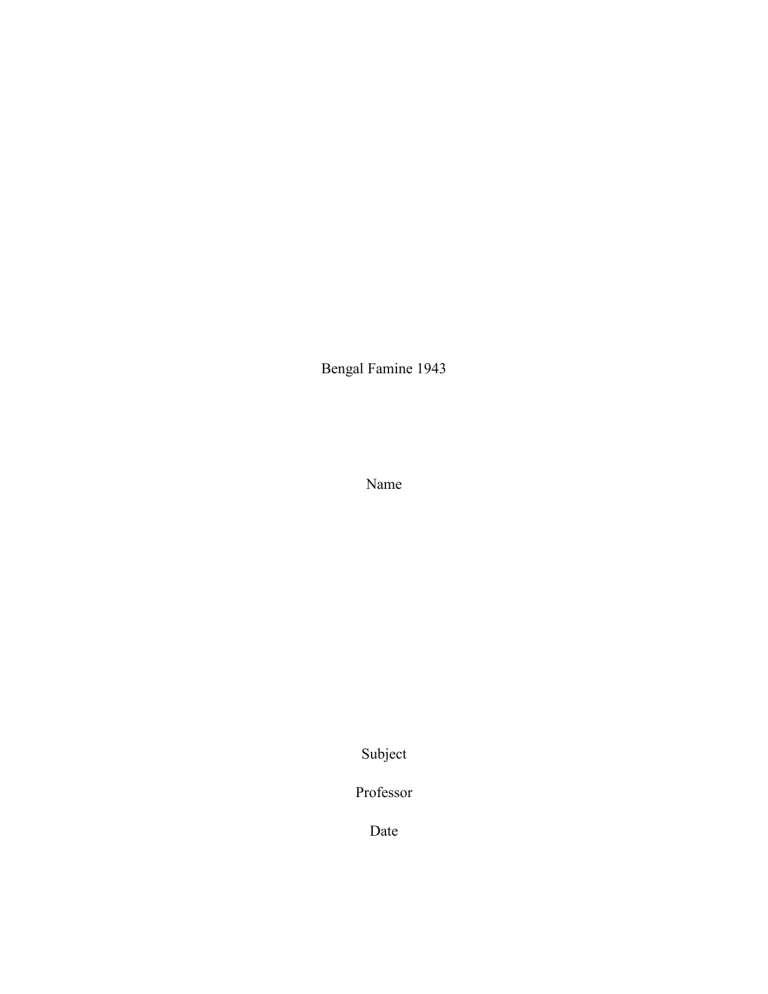
Bengal Famine 1943 Name Subject Professor Date Last Name 2 Bengal Famine 1943 The Bengal famine of 1943 can be described as one of the worst famine that happened in history. The famine resulted in the death of over three million people in India, and majority of them lived in Bengal. Often it is viewed as a genocide; the deaths were as a result of disease, malnutrition, and starvation. The famine in Bengal was clearly as a result of human, causing a significant proportion having been created during the leadership of Winston Churchill. The leadership of the British India demonstrated a lack of action, management, and control. The most significantly affected people were the cobbler’s and carpenters that took the heaviest toll. The reason for this was because they had no means of survival at the time. It was clear that the British government was out to collect resources and had no concern for the livelihoods of the citizens; India was most profit making nations in the world1 1 Maharatna, A. 1993. "Malaria Ecology, Relief Provision And Regional Variation In Mortality During The Bengal Famine Of 1943-44". South Asia Research 13 (1): 1-26. doi:10.1177/026272809301300101. Last Name 3 . It was under the leadership of Churchill Winston that the famine struck India. It was, therefore, his responsibility to manage, control and fix the devastating situation. While the opportunity presented for Churchill to deal with the situation from an ethnic, political and economic standpoint, however, he, disregarded the people and prevented arguably millions of lives from being saved2 2 McAlpin, Michelle B. and Paul R. Greenough. 1984. "Prosperity And Misery In Modern Bengal: The Famine Of 1943-1944". Journal Of Interdisciplinary History 14 (4): 908. doi:10.2307/203510. Last Name 4 . He failed to take the opportunities given to him to handle the situation. There were deliberate attempts to starve the people; some foods were taken away and given to security officers, at the same time the government did not keep any record of the food reserves and were constantly in denial of the famine in India. One of the key factors that contributed to the high toll of deaths was his British macroeconomic policies that denied the people of Bengal the food they grew for other means benefit. The policies were geared towards pleasing the small corporate world at the expense of the millions of masses. The death toll raised every year, and the figures rose to horrific numbers. The British colonial government at then directed its energies towards raising funds for the war against Japan3 3 O'Grada, Cormac. 2001. "'Sufficiency And Sufficiency And Sufficiency’: Revisiting The Bengal Famine Of 1943-44". SSRN Electronic Journal. doi:10.2139/ssrn.1664571. 16-99 Last Name 5 . The starvation was deliberate as food was sold out to source funds for other activities. Bengal province covered a vast area of about 82000 square miles and a population of sixty-three million people, due to the high population only part of this land was cultivable, around thirty-eight million acres. At the same time, the population rose vastly between 1921 and 1941 by a margin of twenty percent. On the other hand, there were no efforts to increase the area of the land that was cultivated. The production at then was not able to sustain the population with rice being the staple food4 4 Tauger, Mark B. 2003. "Entitlement, Shortage And The 1943 Bengal Famine: Another Look". Journal Of Peasant Studies 31 (1): 45-72. doi:10.1080/0306615031000169125. Last Name 6 . The government controlled the land and collected rent for every parcel of land, what is worrying is that their primary interest was in raising revenues. There were no estimates of food deficit being done as well as the consumption figure. The Bengal government was never proactive and imaginative of the food shortages, Bengal, which was one of the richest provinces with favorable climatic conditions had low productivity and could not be realized, and its rice productions were subtle. At the same time, there was the infatuation of land which got lost to other people; there was no accountability of any agricultural welfare. Subinfeudation led the rise of landlessness and rose up to twenty-nine percent of the farming population. Due to the shortage of rice, the prices of rice rose considerably beyond the reach of many people in Bengal. The civil administration at the time could not, however, cope with the situation, a majority of the population moved to seek for jobs in the major towns with no success and a majority ended up dying of starvation. Famine Relief Block There was a terrible cyclone that hit Bengal in October 1942; this was just after the quilt of the Indian movement, this was followed by the distribution of relief food. The police again came with repression that mainly involved families that had collected relief food home and destroyed it5 5 Bhattacharya, Sourit. 2016. "Colonial Governance, Disaster, And The Social In Bhabani Bhattacharya’S Novels Of The 1943 Bengal Famine". Ariel: A Review Of International English Literature 47 (4): 45-70. doi:10.1353/ari.2016.0032. Last Name 7 . The rice was obtained from poorer households to feed the army and resulted in the death of about thirteen percent of the population. The British police and military, hence used rape as a weapon of war; these issues were, however hidden, and leaders such as Fazlul Huq who tried to raise the issue was forced to resign, he was also put to task over raising alarms over the raging famine, and official policies denied the announcements. There were many pleas for relief food that fell on deaf ears of Cherwell, Churchill and Leopold Amery, who were the secretary of state in India6 6 Law‐Smith, 1989. "Response And Responsibility: The Government Of India's Role In The Bengal Famine, 1943". South Asia: Journal Of South Asian Studies 12 (1): 49-65. doi:10.1080/00856408908723118. Last Name 8 . All the events to deny food by Winston Churchill was due to his personal hatred towards Gandhi; he scrutinized his chain of command to as to suppress his rebellion. It is clear that the famine was human-made, the government raised the prices of rice and beyond the reach of many people. At the same time, the same government went ahead to buy all reserve stocks for its army, which heightened the starvation, a larger population of Bengalis lacked food stock reserves. Contrary to this the British entitlement remained intact, and its food reserves were not adversely affected. Furthermore, this followed a fierce debate on the state of the famine. The government at then blamed the virulent brown stain that had changed the rice, what was clear is that food reserves had been destroyed or confiscated since there had been harvested that year. There was obviously no figure of the amount of food that had been destroyed, stock supplied by the merchants7 7 Campion, David A. 2011. "A Review Of “Churchill's Secret War: The British Empire And The Ravaging Of India During World War II”". History: Reviews Of New Books 39 (3): 95-96. doi:10.1080/03612759.2011.557957. Last Name 9 . The finding, reported by the Mukherjee report revealed that the famine inquiry commission distorted or manufactured statistics to hide a lot of information concerning the hunger and the chain of command back to London. Provincial autonomy and pre-famine policies Japan was a significant threat to the occupation of the British in India; they had posed a threat to invade India through Burma in December of 1941. The British at then did not have adequate defense of the Burma coast, and the locals would have received them. The dissatisfaction by the British government lead by Winston Churchill announced an order under the scorched policy through the War office in the coastal territories bordering Indian Ocean that was vulnerable to invasion by the Japanese8 8 Lazzaro, Joseph. 2016. "Bengal Famine Of 1943 - A Man-Made Holocaust". International Business Times. http://www.ibtimes.com/bengal-famine-1943-man-made-holocaust-1100525. Last Name 10 . Orders were issued to destroy all the transport networks, manufacturing industries and surrendering of all the military activities to the British. Food stock reserves were also collected to avoid bulk supplies from falling into the hands of the enemy; these measures were a death sentence to the population9 9 Goswami, O. 1990. "The Bengal Famine Of 1943: Re-Examining The Data". Indian Economic & Social History Review 27 (4): 445-463. doi:10.1177/001946469002700403. Last Name 11 . These actions were known to the Viceroy, Leopold Amery and the commander in chief Archibald Leopold whoa at then had not realized the repercussions of their activities. Millions of people were at the mercies were at the hands of the government which it was impossible to feed since there were no food departments that had been set up. The Japanese invasion caught the British, unaware and cut off their rice supply from Burma that supplied 1.5 million tonnes of rice to a significant population in India. The repercussions meant that the total population in Bengal was receiving half the food they required and left a majority of them starved. The British did not have any measures to increase the food supply by either increasing stock or stopping exports, and as a result, many people were left hopeless. Enforcing morale There was an evident lack of a detailed plan to secure the public regarding food supply. The government’s primary objectives were to ensure the public which was clearly a misguided priority. Civic guards and Bengal home guards were hired, these comprised hundreds of Bengali civilians who served the colonialists in many ways. A majority of these officers were recruited in a war effort. Their employment created a lot of divisions in the Bengal population as some became loyal to the government at the expense of the larger society. The officers that got employed in various government units including medical treatment, corpse disposal, firefighting, rescue and demolitions; others got allocated to sewage, gas, electricity and food supply10 10 Auriol, P 2011. "Hungry Bengal: War, Famine And The End Of Empire". 2016. Choice Reviews Online 53 (08): 53-3628-53-3628. doi:10.5860/choice.195617. Last Name 12 . Despite the allocations the responsibility of the individuals, especially concerning the maintenance of food supply was not clearly laid out. The countryside In Bengal countryside, there were more pressing needs of elemental survival and a significant number of the population had become anemic. The agricultural conditions were deteriorating, and a majority of the farmers only existed since there was no food. The prices of rice had been inflated by half of the rate it had been in the past five years. At the same time, many people had succumbed to conditions such as malaria. Most people were now living on cattle meat and milk, which could not last them for long. The increasing commercialization of the grain market made many peasants fall into debt. Cycle in a verge of starvation between crops. To make ends meet, many Bengalis entered into mortgage relations and lost their lands11 11 Law‐Smith, 1989. "Response And Responsibility: The Government Of India's Role In The Bengal Famine, 1943". South Asia: Journal Of South Asian Studies 12 (1): 49-65. doi:10.1080/00856408908723118. Last Name 13 . Flaws in methods of gathering report The studies done by officials were scrupulous; the officials utilized examples that were purposive as opposed to irregular and too little which kept them from being represented. A significant amount of their data was based on personal judgment and in most cases overestimated the harvests. Most of the officials relied on fabricated data and old documents; the estimates had varied inconsistencies, and this meant that on several occasions, it was impossible to determine the expected yields12 12 Arnold, David. 1984. "Prosperity And Misery In Modern Bengal: The Famine Of 1943–44. By Paul R. Greenough. Oxford University Press: New York, 1982. Pp. Xix, 342. £29.". Modern Asian Studies18 (03): 518. doi:10.1017/s0026749x00009094. Last Name 14 .The individual employed by the British government were illiterate and were provided with little or no data on which to carry out their statistics on food reserves. Such information meant that the government couldn’t make a judgment on the surplus market, leaving the officials with no data to explain the food shortage. Lack of clear priorities The factories in Calcutta caused a lot of economic anxieties. There were poor labor conditions that got characterized by low wages, job insecurity and tedious job. A majority of these workers were employed in cotton industries and were unskilled, and such employees were easily replaceable. At the same time during the war the industrial management needed labor amidst the increasing insecurities and prices of food in India. The war meant that the government could make more profit in the supply of cloth13. The inflation tended to impoverish the already marginal labor force. Some officials in government were always requesting for grain reserves. However, their voice went unheeded. Publicly the same officials pleaded for relief and denied that famine existed. Government officials continually denied the existence of hunger and insisted that there were sufficient food reserves in Bengal. The shortages were a result of many factors; an example is that Lord Cherwell’s economist calculations were always dubious that led policies that were not essential. Investigations into the famine have revealed that a significant number of the deaths resulted due to a large scale exportation of food for the use by British authorities, 13 Tauger, Mark B. 2003. "Entitlement, Shortage And The 1943 Bengal Famine: Another Look". Journal Of Peasant Studies 31 (1): 45-72. doi:10.1080/0306615031000169125. Last Name 15 some were meant for the British army future use. During the famine, some survivors had to throw away their children into rivers; some took away their lives as the conditions became unbearable. People went to the extent of eating grass and tree stems. Those who managed to survive were men fled to other countries; some women took to prostitution. Finally, after many years the famine ended when survivors harvested their rice crop. The first shipment of relief food reached the people during November of the same year, at the time it was already too late, and thousands of people had succumbed to death. The unfolding events are among the worst in human history; it was a terrifying account for most of the Bengalis people. In conclusion, the famine in Bengal resulted in a significant number of deaths; there is a lot of controversy regarding the cause of the death. It is believed that more than five million people lost their lives, including the neighbouring states. There are reasons to believe that the cause of the famine was a deliberate effort to starve the people. This paper reports the various reasons that resulted in such a massacre, a lot of these explanations point to the leadership at then, Winston Churchill, who lead the British Indian colony had crucial role due to the lack of action, poor management and control of the territory. It is evident that the British were at war with Japan, the starvation of people because of the fear of attack was misguided and is unacceptable. The food was also being sold out instead of retaining reserves for its citizens. A lot of the explanations go toward achieving political and economic mileage, especially with countries such as Japan. Others were the enforcement of laws such as the scorched earth policy to destroy food stocks in case Japanese took over. There is also the wartime boom where food demand rose and resulted in the increase in food prices; this made it impossible for a majority of people to Last Name 16 purchase the food. At the same time, there was a lot of mismanagement, there was no proper management of food reserve, and the government also did not take measures to increase food supply with the increasing population that resulted in a shortage. There were deliberate attempts to conceal that there was a famine as people lost lives, some went to the extent of throwing their children due to frustrations. The cause of hunger was inhuman and is not acceptable. Bibliography "Churchill's Secret War: The British Empire And The Ravaging Of India During World War II , Madhusree Mukerjee , New York: Basic Books, 2010, 368 Pp. $28.95 Last Name 17 (Cloth).". 2012. Gastronomica: The Journal Of Food And Culture 12 (2): 107-108. doi:10.1525/gfc.2012.12.2.107. Arnold, David. 1984. "Prosperity And Misery In Modern Bengal: The Famine Of 1943– 44. By Paul R. Greenough. Oxford University Press: New York, 1982. Pp. Xix, 342. £29.". Modern Asian Studies18 (03): 518. doi:10.1017/s0026749x00009094. Auriol, P 2011. "Hungry Bengal: War, Famine And The End Of Empire". 2016. Choice Reviews Online 53 (08): 53-3628-53-3628. doi:10.5860/choice.195617. Bhattacharya, Sourit. 2016. "Colonial Governance, Disaster, And The Social In Bhabani Bhattacharya’S Novels Of The 1943 Bengal Famine". Ariel: A Review Of International English Literature 47 (4): 45-70. doi:10.1353/ari.2016.0032. Campion, David A. 2011. "A Review Of “Churchill's Secret War: The British Empire And The Ravaging Of India During World War II”". History: Reviews Of New Books 39 (3): 95-96. doi:10.1080/03612759.2011.557957. Goswami, O. 1990. "The Bengal Famine Of 1943: Re-Examining The Data". Indian Economic & Social History Review 27 (4): 445-463. doi:10.1177/001946469002700403. Law‐Smith, 1989. "Response And Responsibility: The Government Of India's Role In The Bengal Famine, 1943". South Asia: Journal Of South Asian Studies 12 (1): 4965. doi:10.1080/00856408908723118. Lazzaro, Joseph. 2016. "Bengal Famine Of 1943 - A Man-Made Holocaust". International Business Times. http://www.ibtimes.com/bengalfamine-1943-man-made-holocaust-1100525. Maharatna, A. 1993. "Malaria Ecology, Relief Provision And Regional Variation In Mortality During The Bengal Famine Of 1943-44". South Asia Research 13 (1): 126. doi:10.1177/026272809301300101. Last Name 18 McAlpin, Michelle B. and Paul R. Greenough. 1984. "Prosperity And Misery In Modern Bengal: The Famine Of 1943-1944". Journal Of Interdisciplinary History 14 (4): 908. doi:10.2307/203510. O'Grada, Cormac. 2001. "'Sufficiency And Sufficiency And Sufficiency’: Revisiting The Bengal Famine Of 1943-44". SSRN Electronic Journal. doi:10.2139/ssrn.1664571. 16-99 Tauger, Mark B. 2003. "Entitlement, Shortage And The 1943 Bengal Famine: Another Look". Journal Of Peasant Studies 31 (1): 45-72. doi:10.1080/0306615031000169125.

